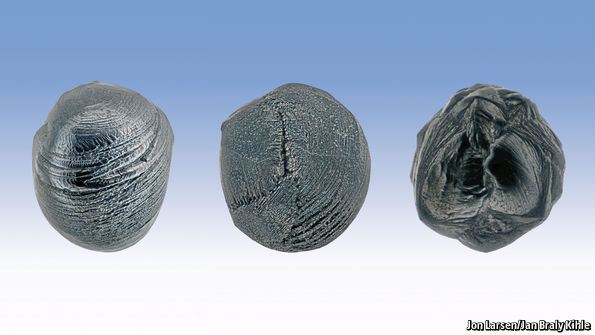Finding micrometeorites in city gutters

ABOUT 4.6bn years ago, a spinning disc of gas and dust began to coalesce into balls of matter. The largest sphere, at the disc’s centre, collapsed under its own gravity to form the sun. Other clumps of dust, scattered around its periphery, became planets and asteroids. In planets, this dust has long-since metamorphosed into rock. But in many asteroids, it is still more or less intact. As a consequence, when asteroids collide, some of it is liberated—and a small fraction of that material eventually falls to Earth as micrometeorites. This micrometeoritic dust arrives at a rate of around six tonnes a day. Spread over Earth’s surface, that amounts to just one particle per square metre each year.
Researchers go to great lengths to gather these grains, because they can reveal details of the solar system’s composition and history. They normally collect them by dredging up ooze from the ocean bed, then sifting and filtering it to find a few precious particles, or by melting tonnes of ice from the Antarctic to see what precipitates. Those two locations have the advantage of being isolated and reasonably free of dust from industrial sources. Now, in a study just published in…Continue reading
Source: Economist




